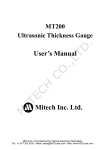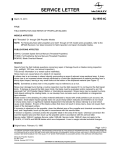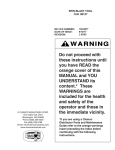Download Procedure Manual - Callington Haven Pty Ltd
Transcript
Procedure Manual Visible Dye Penetrant Inspection Process Spray Can Method Callington Haven Pty Ltd is an Australian owned and operated company that has served the global markets for over 30 years, exporting to 37 countries. Our welding consumables are used in countries worldwide and provide a high standard of quality and reliability. Sherwin Inc. is a global leader in Non Destructive Testing products for Industry and Aviation. Table of Contents Introduction 2 Cleaning 4 Dye Penetrant Application 5 Dye Penetrant Removal 6 Developer Application 7 Inspection (Flaw Reading) 8 Developer Removal 9 Special Processing Conditions 9 Use of Spray Cans 12 1. Introduction Dye penetrant inspection finds hairline cracks The visible dye penetrant inspection process detects surface connected cracks and other flaws, such as laps and pores in all metals, as well as in most plastics and ceramics. It is widely used for determining the integrity of a weld. Flaws appear as red marks on a white background Through dye penetrant inspection, cracks are revealed as vivid red lines on a white background. The process consists of: (1) applying a liquid, red dye penetrant which seeks out and enters surface flaws, (2) removing the red dye penetrant that did not enter a defect, and (3) spraying on a white developer. The developer, a white powder suspended in an evaporative solvent, pulls flaw-retained dye penetrant back to the surface where it is seen as a red mark on a white background. There is also a fluorescent dye penetrant process which is similar to the red dye process, except that flaw indications are revealed under black/UV light. Step 1 - Apply red dye penetrant Step 2 - Remove excess Step 3 - Apply white developer and examine Three materials are used Three materials are used in the process: (1) red dye penetrant, (2) Cleaner/Remover, and (3) developer. Pressurised spray cans are the most commonly used package. The cans are easily carried to the part to be inspected. There are no brushes to clean; no spillage. Plus, spray cans protect inspection materials from contamination. Dye penetrant can be sprayed on a limited area of a part, such as a weld or critical section. It can be removed by wiping with a dry towel or a towel dampened with Cleaner/Remover. In the case of water-washable dye penetrant, it can be removed with a water-dampened towel or by water spray. The developer is always applied by spraying. 2. The procedures in this pamphlet apply to the spray can method of inspecting limited areas. Instructions and procedures for production inspection of a large quantity of parts by either the visible dye or fluorescent dye penetrant method can be obtained from the Technical Department of Sherwin Incorporated. Detailed procedures are given also in ASTM E-165. Certification available Sherwin Incorporated’s Dubl-Chek dye penetrant materials meet ASME and similar nuclear, aerospace, and U.S. Government specifications for purity and performance. Appropriate certification is available and furnished on request. Five basic operations In sequence, the basic steps in the process, as outlined and discussed in this booklet, are the following: Clean the surface apply dye penetrant remove excess dye penetrant apply developer inspect the surface Critical operations: penetrant removal and developer application The two most critical operations are: (1) excess dye penetrant removal, and (2) application of developer. Guidelines as to dwell times, temperatures, and techniques are offered. The booklet also discusses special condition methods - “through-flaw,” or leak, testing, high temperature surfaces, cold weather inspections, and dual purpose (visible/fluorescent) penetrant - as well as the proper use of spray cans and the safe handling of dye penetrant materials. 3. 1. Cleaning First, clean the surface A clean surface is essential for successful dye penetrant inspection. The surface to be examined and adjacent area should be free of such contaminants as ultrasonic couplants, welding flux, weld spatter, scale, rust, paint, oil and grease. Organic soils, such as oil and grease, clog cracks and prevent or retard dye penetrant entry. Usually, organic soils are removed with Dubl-Chek Cleaner/Remover. Other contaminants, such as scale, rust and inert dirt, will trap dye penetrant and create false and confusing indications. These contaminants may require the use of stainless steel wire brushes for removal. The cleaning process should be appropriate for both the soil and substrate, and should conform to applicable specifications and codes. How to use Sherwin Cleaner/Remover Cleaning with Sherwin Cleaner/Remover: Spray Sherwin’s Dubl-Chek Cleaner/Remover directly on the surface, saturating the contaminated area. Let stand for about 30 seconds while organic soils dissolve. Wipe clean with a dry towel or cloth before the Cleaner/Remover evaporates completely. Repeat until clean. 1. When cleaning, saturate the surface with Cleaner/Remover. 2. Next, wipe the surface dry with cloth or towel. IMPORTANT: Following the cleaning process, allow sufficient time for the Cleaner/Remover to evaporate completely from cracks or other surface openings before applying Dubl-Chek Dye Penetrant. The evaporation rate depends on ambient temperature and humidity. Three Sherwin Cleaner/Removers are available. Two - DR-60 and DR-62 - are volatile, petroleum solvent-based; each evaporates completely and leaves no residue. They are used to clean parts before dye penetrant is applied, and to remove penetrant from a part’s surface prior to developer application. DR-60 Cleaner/Remover is generally 4. preferred for pre-cleaning, as it is more effective, although it is slower to evaporate. Where conditions require rapid evaporation, DR-62 is preferred. The third cleaner, KO-19 Remover, is formulated to be a remover rather than a pre-cleaner. It is used to remove penetrant prior to developer application under special circumstances which are described on page 11. 2. Dye Penetrant Application Spray dye penetrant on clean, dry surface; let stand 5 minutes or more. Spray dye penetrant on a clean, completely dry surface. Let it remain for 5 minutes or more. If especially tight cracks are suspected, if there is reason to believe defects are contaminated and not free of soil, or if the substrate is cold (below 60°F), the dye penetrant should dwell on the surface for a longer time. Thirty minutes or more is not uncommon. If the surface temperature is higher than 125°F, shorter dwell times are recommended. Minimally, a one minute dwell would be recommended for surfaces at 200°F, the maximum temperature for the conventional dye penetrant inspection process. Use Sherwin Hi-Temp penetrants on surfaces over 200°F. (Some codes limit the upper temperature for performing penetrant inspection, typically, to 125°F, and processing at higher temperatures may require special authorisation.) Cover the surface to be inspected with red dye penetrants. Dye penetrant is pulled into the crack by capillary force. 5. 3. Dye Penetrant Removal Wipe off surface penetrant This is a critical procedure. It must be closely controlled in order to prevent diluting or disturbing flaw-entrapped dye penetrant. Dye penetrant is removed from the inspection surface by manually wiping with a towel or cloth. First, wipe the surface with a clean, dry cloth or towel to remove the majority of the surface dye penetrant. Smooth surfaces may wipe clean with a dry cloth and may not require further processing. Remove any remaining surface dye penetrant film with a towel pre-moistened by spraying with Cleaner/Remover. Use minimum Cleaner/Remover Use Cleaner/Remover sparingly. Repeat the wiping process until the surface is free of dye penetrant film. Important: Do not spray Cleaner/Remover directly on the surface to remove excess dye penetrant. Doing so risks removing penetrant from flaws. Some penetrants are water washable and may be removed by wiping either with a towel or cloth dampened with Cleaner/Remover, or by wiping with a water dampened cloth or towel. (Water-washable dye penetrant may be removed from large areas with a water spray. Be sure to obtain and follow instructions for appropriate water wash techniques.) 6. Surface penetrant is removed by wiping both with dry and with Cleaner/Remover moistened towels. The surface is wiped clean but dry penetrant remains in crack. Moisten a towel with a spray of Cleaner/Remover for removing traces of red. Avoid over-removal! Do not spray Cleaner/Remover directly on the surface to remove dye penetrant. 4. Developer Application Shake the developer can Proper technique in developer application is essential for sharp flaw definition. Before applying developer, vigorously shake the spray can to restore fully the white developer particle suspension. Spraying is the ONLY recommended method of applying developer. Apply an even, light, slightly damp coating The goal is to spray a light, even coat which is slightly damp when it contacts the surface. It should be slightly damp, so the volatile solvent will couple the flaw-entrapped dye penetrant to the powder and speed the penetrant’s return to the surface for viewing. But, it should not be so damp as to dilute and over spread the small amount of dye penetrant retained in the flaw. A too damp developer application results in weak, blurred indications. Two or three light applications are preferred to a single heavy coating The evenly deposited coating of white developer particles should be sufficient to provide: (1) a good capillary track for the dye penetrant, and (2) a good contrasting white background for the red dye penetrant flaw markers. But, it should not be too heavy, or it will hide or obscure the red flaw indications. Two or three light spray applications to obtain the desired white particle coating are preferred to a single heavy application. Developer is sprayed in 2 or 3 light applications, slightly damp on contact, from a distance of 8 to 12 inches. An even, light developer covering of white particles pulls the red dye penetrant from the crack to the surface by absorption. Two non-aqueous developers are available: D-100 developer (alcohol carrier) and D-106 (alcohol-acetone carrier). They are both used in the manner described above. Both are white particle suspensions. Both rely on solvent and capillary action to pull flaw-retained dye penetrant back to the surface to delineate the flaw against a white background. 7. D-100 developer and D-106 developer compared D-100 developer uses an alcohol solvent while D-106 uses a more volatile solvent carrier which evaporates faster than alcohol. As it is slower to evaporate, D-100 provides maximum sensitivity for the microscopic flaw under average conditions. However, on cold parts and under cold or humid weather conditions, D-100 may dry too slowly and D-106 will be preferred. 5. Inspection (Flaw Reading) Allow time for flaw indications to appear completely As soon as the developer has dried, indications of flaws (if present) will appear. However, it is suggested that an additional 5 minutes, or longer, be allowed for indications to reach their full pattern prior to final visual examination and indication interpretation. The need for a longer developing time is essential if extremely tight cracks are suspected. Some types of flaws re-bleed profusely, and monitoring the surface during the developing time assists in correctly interpreting the characteristics of the flaw. The rate of bleed back, depth of colour, as well as the indication pattern clue the inspector as to the defect type. Red lines indicate cracks, laps or lack of fusion. Tight cracks may appear as dots in a line or curve. Porosity appears as scattered red dots. The criteria for rejecting a part are usually determined by design engineers. Not all flaws may be cause for rejection. Size, location, and type of indication, as well as a part’s eventual use and work load, will influence the rejection criteria. Flaw indications in a weld. A red line indicates a crack, lack of fusion or a cold shut. 8. Fatigue crack indication in a crankshaft. Red dots in a line or curve reveal a tight crack. Scattered red dots indicate porosity. 6. Developer Removal An optional step Normally, the white developer powder remaining on the surface is removed before subsequent processing or use of the part. Although brushing removes the dry powder, a faster and more thorough method to remove both D-100 and D-106 developers is to wipe with a water saturated towel, followed by wiping with a dry towel. After this final step, the surface is extremely clean and if the metal is prone to corroding, a corrosion preventative treatment may be appropriate. 7. Special Processing Conditions Cold weather conditions Some codes and specifications establish minimum test surface temperatures, typically 50°F, and processing at a lower temperature requires special authorisation. Cold weather impairs the performance of dye penetrant inspection due to water condensation on cold surfaces, retarded dye penetrant migration, slow developer drying rate, and reduced spray can pressure. Take the necessary steps to compensate for cold weather effects. Compensate for cold temperatures 1. If condensation is present, wipe surfaces dry and, if possible, warm the surfaces with a heating device. 2. Extend the dwell time of the dye penetrant to 30 minutes. 3. Spray the developer from a greater distance than normal so it arrives at the surface virtually dry, rather than slightly damp. 4. Keep the spray cans warm, especially the developer, by carrying against the body, or by some other means. Use Sherwin Hi-Temp penetrant on surfaces 200° to 350°F High temperature surfaces Sherwin’s specially formulated Hi-Temp penetrants are recommended for inspecting surfaces over 200°F. Using Hi-Temp KO-17 penetrant, Hi-Temp KO-19 remover, and Hi-Temp D-350 developer makes it possible to inspect welds maintained at a preheat temperature of 350°F without the need to cool between weld passes. Hi-Temp KO-17, Hi-Temp KO-19 and Hi-Temp D-350 are non-halogenated, non-chlorinated materials. Halogenated (chlorinated) solvents in contact with high temperature surfaces break down and form hazardous vapours (phosgene) and acids (hydrochloric). Caution: Do not leave pressurised spray can on hot surfaces. 9. Leak test (through-flaw) inspection Flaws which extend completely through thin-wall metal containers - tanks, tubing, and vessels - are readily detected by the dye penetrant process. The procedure differs from the standard process: dye penetrant is applied to one side while developer is applied to the opposite side; there is no dye penetrant removal step. Dye penetrant leak test procedures During “leak testing” one side, such as the inside of a tank, is treated with dye penetrant. The other side is coated with developer. The dye penetrant migrates through the flaw, and when it reaches the opposite side, reveals the flaw as a red mark on a white background. Perform dye penetrant leak test first Flaw passages must be free of contaminants - water, solvents, oils, etc. Moisture from air pressure tests conceivably can interfere with through penetration. Use the dye penetrant leak test prior to other tests, such as hydrostatic and ultrasonic, to minimise the possibility of flaw passage contamination. An extended dye penetrant dwell time is necessary Dye penetrant leak testing has limitations and, typically, the process is restricted to wall thicknesses of 1/4 inch or less. The rate of through penetration depends in part on the shape of the capillary passage. A narrow tube provides the best passage. Porosity retards dye penetrant movement. If wall thickness is near maximum and if poor capillary action is anticipated, the dwell time should be extended. 30 minutes is suggested. A second application of dye penetrant during the 30 minute dwell may prove advantageous. Red dye penetrant is applied to one side of the thin walled metal test piece and white developer is sprayed on the opposite side in the “leak test”. 10. Following a lengthy dwell time the red dye penetrant migrates through the flaw passage to the opposite side to be seen as a red mark contrasting with the white developer. Black light required Fluorescent Penetrant Inspection Process In the fluorescent penetrant method, the penetrant removal step and surface examination take place under black light in a darkened area. Otherwise, the processing procedure for the fluorescent penetrant spray can method does not differ from the visible dye penetrant method described in this pamphlet. Also, flaw indications appear as glowing, yellow-green marks under black light instead of red marks contrasting with a white background. Fluorescent penetrant method reveals cracks as glowing bright yellow-green lines under black light. Combined fluorescent/visible dye penetrant By-Lux (dual sensitivity) Penetrant Dubl-Chek By-Lux penetrant is a two-in-one penetrant; a fluorescent penetrant under black light and a visible penetrant under white, or natural, light. Under black light, defects glow as orange marks; while under white light, they appear as red marks on a white background. Sherwin By-Lux penetrant is sometimes referred to as a dual-sensitivity penetrant, since the fluorescent method has greater sensitivity for the tight, incipient flaw. Processing procedures for By-Lux are essentially the same as described for the standard visible dye penetrant. KO-19 Foam Remover KO-19 is a water-base detergent remover containing no petroleum solvents. It is emitted from the spray can as a foam. This foam lifts penetrant from the surface; it does not dissolve the penetrant as do solvent removers. After KO-19 foam is sprayed on a surface and allowed to stand for 10 to 30 seconds, the foam-penetrant mixture is wiped from the surface. Next a water-dampened towel is used to wipe any remaining traces of foam/penetrant. Wiping with a water-dampened towel is essential. Wipe the surface dry before applying developer. KO-19 foam cannot penetrate cracks to displace and dissolve flaw-entrapped penetrant. Therefore, using KO-19, instead of a solvent-base remover, increases the reliability of the wipe-off, or Method C, penetrant process. While KO-19 foam removes many light surface soils, it will not clean cracks or flaws of entrapped soils, and is not usually recommended for pre-cleaning. 11. 8. Use of Spray Cans Good technique is required in the spray application of developer: 1. Just before using, shake developer spray cans vigorously until agitators rattle freely to be sure all white particles are suspended. 2. Hold can 8 to 12 inches from the surface. 3. To make certain spray pattern is even and smooth, commence spraying adjacent to inspection surface. 4. Then, move the spray across the inspection surface at a steady, slow rate, remembering that 2 or 3 light coats of developer are better than a single heavy coat. While developer application is an art, no special techniques are required in applying dye penetrant to the surface or Cleaner/Remover to the wiping towel. All spray cans are affected by temperature changes. Spray can pressure drops at lower temperatures and rises with higher temperatures. Cold temperatures, below 55°F, may result in insufficient pressure for adequate performance. See Cold Weather Conditions comments. CAUTION: Higher temperatures may cause excess pressure which can be hazardous. Do not store at temperatures over 120°F; keep out of sun’s rays; keep away from flame; do not discard in fire or incinerate. Read the label on the can. 12. 9. Precautionary Information In general the following procedures should be followed when using Sherwin Dubl-Chek dye penetrant inspection products. Use only where ventilation is adequate to carry vapours out of area; do not allow vapours to accumulate in confined areas. Do not spray materials near ignition sources, such as open flames. Avoid breathing vapours or spray mist. Do not take internally. Avoid prolonged or repeated contact with skin. Materials are intended for industrial use by qualified individuals. Some materials are flammable. Precautionary information on the handling and use of individual Dubl-Chek materials can be found on the spray can labels and in product bulletins. Read this information. MSDS’s are available upon request. 13. Callington Haven Pty Ltd (Incorporated in NSW, ACN 000 632 404) 30 South Street, Rydalmere NSW 2116 Australia Tel: (612) 9898 2788 Fax: (612) 9684 4215 www.callingtonhaven.com Sherwin Incorporated 5530 Borwick Ave, Southgate, CA 90280 Tel: (310) 861 6324 Fax: (310) 923 8370

















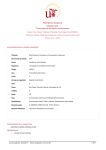
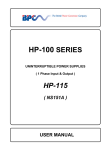
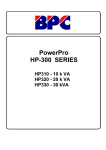
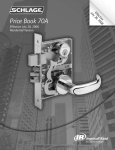
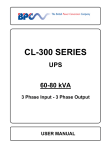
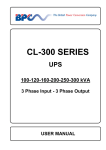
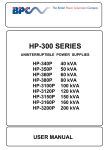
![[4910-13-U] DEPARTMENT OF TRANSPORTATION Federal](http://vs1.manualzilla.com/store/data/005730800_1-83b69f38eee92750e4a30066087ffbc6-150x150.png)
